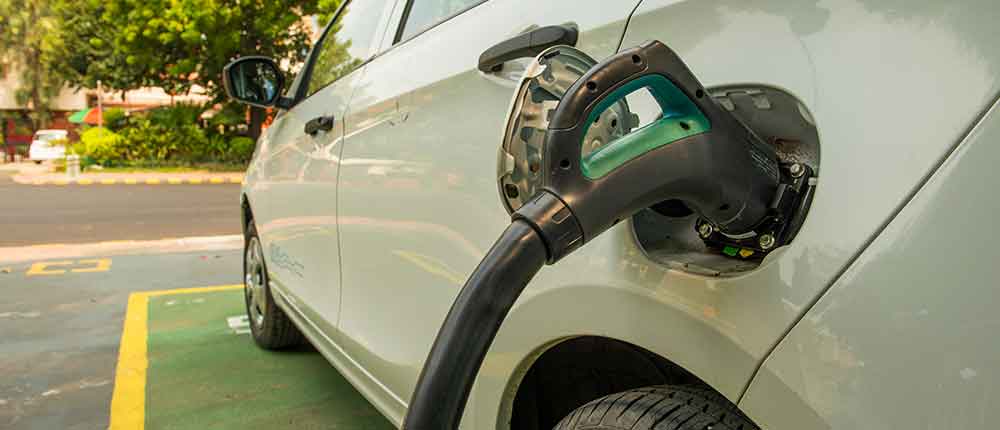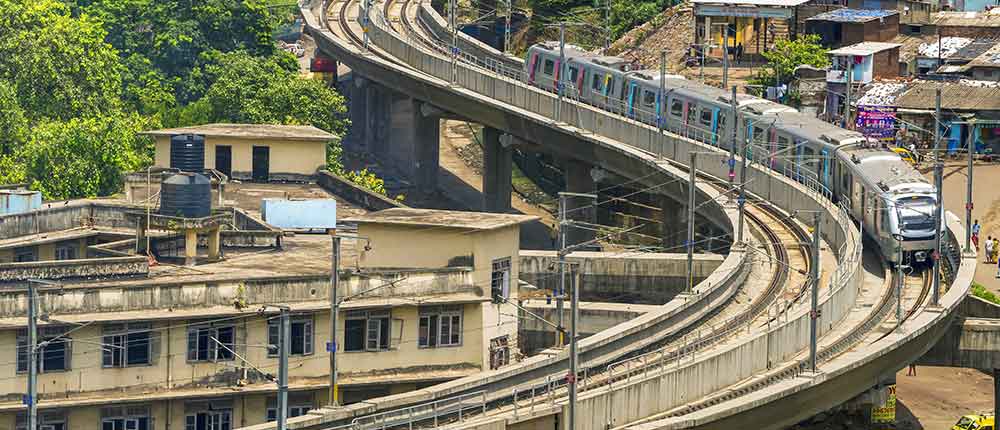Roads and railways bind a nation and bring people together. They facilitate the achievement of SDGs, as without adequate mobility, SDGs cannot be achieved and sustained.

India has made a bold commitment in its NDC to reduce CO2 emission intensity by 33-35% by 2030. This commitment, which is widely acclaimed as a courageous move, has placed a great responsibility on India. The fulfilment of India's commitments is to a large extent dependent on its ability to increase the share of railways in the transportation of freight and passengers to 45% of total land transportation by 2030.
This clearly calls for a massive investment both in road and rail together with strategies to bring about a shift from road to more environmentally benign modes like rail and water. The massive investment that this budget (2021) has proposed in road and rail development is in the right direction. The capital outlay of Rs 108,230 crore for road development and Rs 107,100 crore in railway infrastructure creation has been the highest investment in these two modes so far. However, it is interesting that maximum allocation for roads is in the states, which are going to the polls. Therefore, it appears at first glance that these allocations are targeted at the elections and not at primary change. However, an analysis of the projects listed in the annexure to the budget shows that they would also make a significant contribution to CO2 reduction. It would help, if the government indicates the criteria for the choice of projects to make reasons transparent.
Raising additional funds for the development of roads and railways should not be a problem if the government is committed to raise funds through monetization of assets and sale of land. This would need to have a special cell or a special purpose vehicle to make it happen in a totally transparent manner.
The road sector in India is still underdeveloped: only 24% of the national highways are four/six/eight-laned, while 49% are two-laned and 27% are single/intermediate-laned. The Government has set up massive targets for road construction but have not taken necessary steps to implement strategies to reduce road related morbidity and mortality caused by 'well' developed roads and fast moving cars, and also in consciously planning and implementing measures to reduce CO2 emissions in building and operating national highways, a subject on which TERI has done seminal work.

It is also important that the ministry pays more attention to the maintenance of roads, which have been declared as national highways. Maintenance today gets very little attention and management of roads is a contentious issue. Of the total length of national highways, only 38% of the length is vested with the National Highways Authority of India (NHAI) to be built and/or managed by the authority. The rest is still managed and maintained by the Ministry of Road Transport and Highways (MoRTH) through state PWDs and road development agencies. The ministry, as is the case with many other countries, should only be responsible for policy, regulations, and financing. The management of roads should essentially be seen as a managerial function carried out by NHAI and not by a policy-maker.
The vehicle scrappage policy is being rolled out, which adequately incentivize a reduction in old vehicles (20 years for private and 15 years for commercial vehicles). It is estimated that about 1% of the total registered commercial vehicles are pre-2000 and are the most polluting, accounting for 15% of the total vehicular pollution. This would be another window that leads to reducing carbon footprint of the auto industry. The green tax should also help in augmenting finance for road development and maintenance.
While large allocations have been made for roads and railways, the strategy that the Government would adopt to effect a shift from road to rail or water transport, and use technologies to upgrade the quality of rolling stock should be brought up for discussion. It is unfortunate that adequate funds are not being made available for the water transport sector.
The development of roads and railways should increasingly be planned on the basis of the contribution to reduce carbon emissions. Let us hope that as part of this budget these capacities to plan and monitor the contribution of different modes to our country’s emission targets will be initiated and our future budgets promote sustainable transportation.

This budget also made provisions for building metros in cities, which are not justified on a rational basis as compared to bus-based public transport. The affordability and sustainability of metro based transportation should be thoroughly and independently reviewed, and standards set by way of transportation requirement – city geography, financial strength of city governments, demography, economic status, etc. Guidelines should be established for the preparation of plans for the planned metro projects, specifically related to the population level as cities grow. Local transport should be subsidized and sustained by the city governments, especially Tier II and Tier III cities, and not through central grants.
This budget has taken yet another initiative to promote bus-based public transport: Rs 18,000 crore has been allocated for the purchase of 20,000 buses by cities. The last such financial support was extended for purchase and use of buses in cities as part of the JNNURM in 2009. It is important that these funds are deployed to purchase buses where public transport can have maximum impact and not sparsely scattered amongst different states for political or other considerations.
Roads and railways bind a nation and bring people together. They facilitate the achievement of SDGs, as without adequate mobility, SDGs cannot be achieved and sustained. It is again transport that is vital to facilitate education, health, job and marketing opportunities for farmers, fishermen, traders, etc., and help communities grow with access to better markets. It is, therefore, essential that transport should be developed to maximize benefits and ensure that in the process safety and environment are not compromised.
